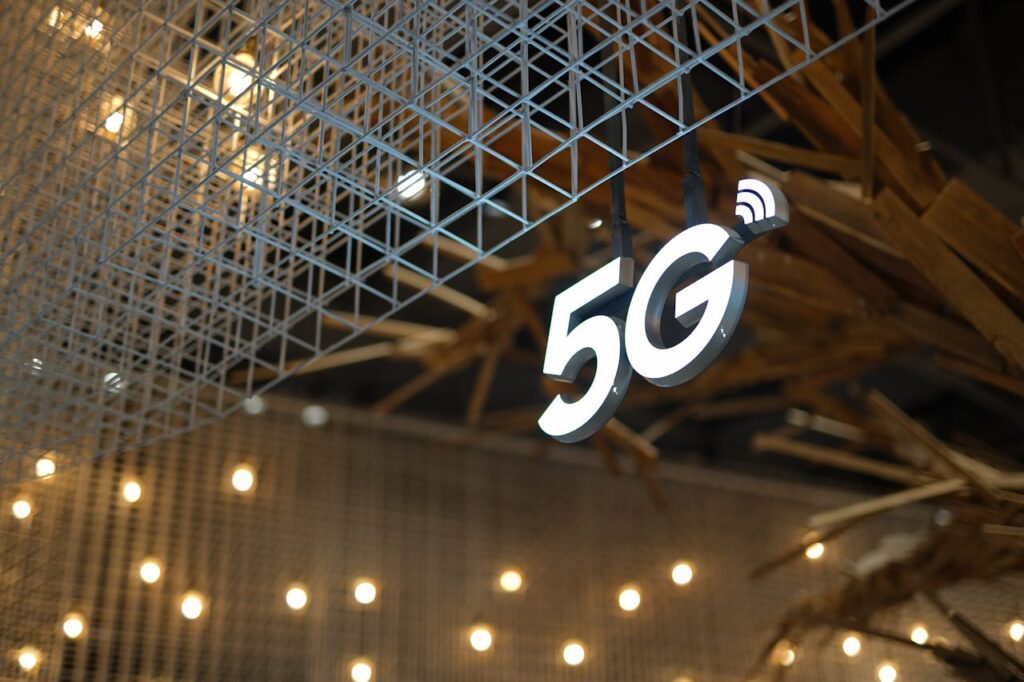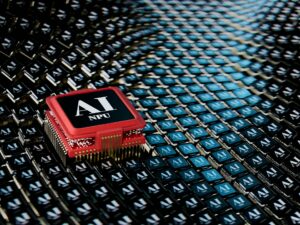Driven by Artificial Intelligence and 5G, the Next Wave of Digital Transformation

Driven by Artificial Intelligence and 5G, the Next Wave of Digital Transformation
Artificial intelligence (AI) and fifth-generation (5G) networks are not only technical advancements; rather, they are the driving forces behind a comprehensive digital revolution that the world is about to undergo. Both of these cutting-edge inventions are altering industries, making it possible to make decisions more quickly, and redefining what it means to be a user.
5G and artificial intelligence are working together to create a new digital ecosystem that is more advanced, more intelligent, and more connected than ever before. This ecosystem includes autonomous cars, smart cities, and real-time healthcare solutions. What is it about this mixture that makes it so effective? Let’s investigate the ways in which artificial intelligence and fifth-generation wireless networks are driving the next wave of digital revolution.
The Reasons Why Artificial Intelligence and 5G Are a Perfect Match
In contrast to artificial intelligence, which focuses on intellect, learning, and decision-making, 5G is all about speed, ultra-low latency, and connection. They open up possibilities that were previously considered science fiction when they are combined.
Imagine drones driven by artificial intelligence that can deliver items in a matter of seconds, real-time traffic management systems that can optimize city roadways, or wearable gadgets that can monitor your health and provide medical professionals real-time data. It is impossible to see all of this happening without the lightning-fast network speeds of 5G and the capacity of artificial intelligence to instantaneously process and analyze vast amounts of data streams.
1. 5G: The Foundation of a Hyperconnected World The 5G technology has speeds that are up to one hundred times faster than those of 4G, and it has a latency that is as low as one millisecond. Real-time applications such as augmented reality, virtual gaming, and linked gadgets are perfect examples of how this technology may be used.
Because billions of objects, including smart appliances, sensors, automobiles, and industrial equipment, need uninterrupted communication, the Internet of Things (IoT) is largely dependent on fifth-generation wireless networks. Intelligent factories that are driven by 5G are already lowering downtime, enhancing efficiency, and allowing predictive maintenance in areas such as manufacturing.
2. AI: The Central Processing Unit of Digital Transformation
AI is able to turn raw data into insights that are valuable. It is the driving force behind everything from Siri and Google Assistant, which are virtual assistants, to sophisticated algorithms that can anticipate consumer behavior, identify fraudulent activity, and enhance medical diagnosis.
In 2025, artificial intelligence is not just evaluating historical data; it is also predictive and adaptable. For example, artificial intelligence has the ability to make split-second judgments in autonomous vehicles by using sensor data. Furthermore, with 5G connection, these vehicles will be able to interact with other vehicles and traffic systems in real time.
3. Making Decisions in Real Time Using 5G and Artificial Intelligence
When it comes to applications that demand quick decision-making, the synergy between artificial intelligence and 5G is particularly noticeable.
- Diagnostics powered by artificial intelligence mixed with 5G technology make it possible to do remote operations and monitor patients in real time.
- Commerce: Chatbots driven by artificial intelligence and tailored purchasing experiences are made possible by the lightning-fast connection of 5G.
- When it comes to traffic control, waste management, and public safety, smart cities are characterized by artificial intelligence (AI) that analyzes live data from cameras and sensors, and 5G that allows seamless communication between devices.
4. Dramatizing the Entertainment and Media Industries
The way in which we take in entertainment is evolving as a result of 5G. Video streaming in 4K and 8K resolution, cloud gaming, and immersive augmented reality and virtual reality experiences are becoming more popular. Artificial intelligence plays a significant role in improving content suggestions, customization, and user engagement.
As an example, cloud gaming platforms are dependent on low-latency 5G connections, whilst artificial intelligence facilitates the optimization of gameplay experiences by adjusting visuals and difficulty levels in real time.
5. The Facilitation of Self-Driving Vehicles
Intelligent vehicles that drive themselves are a perfect illustration of how 5G and AI may operate together. The data collected by cameras, radar, and lidar sensors is processed by artificial intelligence, while 5G makes it possible for cars to connect with each other and with infrastructure. This guarantees a more seamless flow of traffic, enhanced safety, and a more rapid reaction to any possible problems that may arise.
6. Increasing the Efficiency of Business and Industrial Operations
Already, industries such as manufacturing, agriculture, and logistics are using robots driven by artificial intelligence (AI) and remote monitoring enabled by 5G technology in order to improve their productivity. When it comes to monitoring crops in real time, for instance, farmers may utilize drones that are integrated with artificial intelligence. Similarly, companies can identify equipment failures before they create expensive downtimes.
7. The Future of Work in the Era of Artificial Intelligence and 5G
Artificial intelligence (AI) and high-speed internet have led to significant advancements in topics such as remote work, virtual meetings, and collaborative platforms. Through the use of cloud computing that is enabled by 5G, workers are able to use sophisticated tools driven by artificial intelligence, perform simulations, and instantaneously transfer massive files, regardless of their location.
8. Obstacles Presented by the Integration of 5G and AI
Even if there is a tremendous amount of promise, there are obstacles:
- Safety: An increase in the number of connected devices results in an increased susceptibility to cyberattacks.
- Cost: The construction of artificial intelligence systems and 5G infrastructure involves a large investment.
- Ethical Concerns: The decision-making process of artificial intelligence poses problems regarding responsibility, data bias, and privacy.
9. What’s Next for Artificial Intelligence and 5G?
More improved artificial intelligence systems that are capable of performing difficult tasks similar to those performed by humans will be available in the future. It is becoming more likely that we will live in a society in which everything is linked and intelligent, from houses and cities to automobiles and places of employment.
AI and 5G are not only distinct technologies; rather, they are partners that are driving the next digital revolution by working together. The combination of these factors will give sectors new life, transform the experiences of customers, and open doors to possibilities that were previously inconceivable.
Businesses, governments, and people that are willing to embrace this shift will find themselves at the vanguard of a future that is more intelligent, quicker, and more connected.




